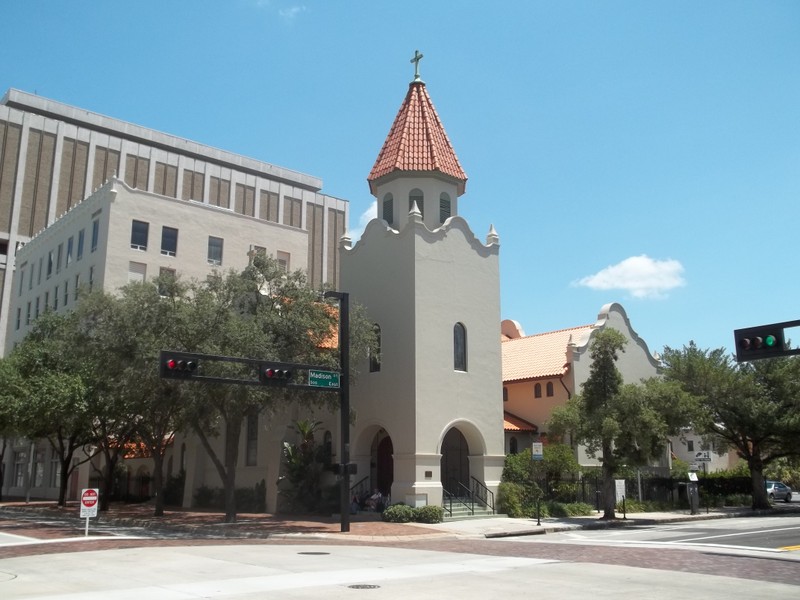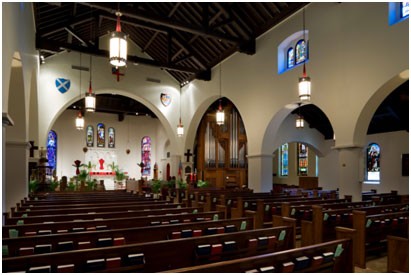Saint Andrew’s Episcopal Church
Introduction
Text-to-speech Audio
Saint Andrew’s Episcopal Church was completed in 1907 and replaced the congregation's wood frame church which had stood at this location since 1883. The design of this church incorporated some of the features of the previous church, as local architects Michael J. Miller and Francis J. Kennard found ways to blend the original church's stained glass windows and interior features with the Mediterranean Revival style of architecture they used in building this structure. Saint Andrew's was added to the National Register of Historic Places in 2009.
Images
Built in 1907, Saint Andrew’s Episcopal Church was added to the U.S. National Register of Historic Places in 2009.


Backstory and Context
Text-to-speech Audio
Rev. R. A. Simpson established St. Andrew's in August 1871 under the direction of Bishop John Freeman Young, who became bishop of Florida around early 1868 and visited the Tampa area shortly thereafter. At that time, he presided over the first Episcopalian service in Tampa and it was held in the former Fort Brooke hospital. Apparently, many people attended and for most of them this was their first service. Bishop Young baptized one of them and confirmed five others. Rev. Simpson served as a missionary for two years and during that time presided over 11 funerals and baptized 22 people. St. Andrew's remained a small congregation but membership did rise from 6 to 12 people.
It wasn't until 1876 that the congregation was able to purchase a building on Marion Street to be its first house of worship. As noted above, it later built the first St. Andrew's church in 1883. It was designed in the Gothic Revival style and was expanded in the coming years. In the early 1890s, St. Andrew's added the north transept, tower and study. It installed four bells in the tower as well.
St. Andrew's construction occurred during a period of growth in Tampa, which accelerated after 1885. That year, Spanish-born cigar manufacture Vicente Martinex-Ybor moved his operations from Key West and Cuba to Tampa. He also persuaded other cigar makers to do the same. This brought an influx of immigrants to Tampa, most of whom were Catholic. They settled on land that Martinez-Ybor had purchased and they created a community near downtown called Ybor City. By 1887, the population in Tampa grew to 5,000 residents.
Construction of the present St. Andrew's Church began in 1904. When it was finished in 1907, the congregation had grown to 285 members. During the Great Depression, the church suffered mightily. It accrued tens of thousands in debt and owed thousands more in interest payments, and the congregation decreased by 169 people. However, through hard work the congregation raised enough funds to keep the church afloat. During the next couple of decades, St. Andrew's recovered and grew once more. By 1962, the congregation grew to 1,000 members. As of 2023, there are 1,162 members.
Sources
"Faith of Our Fathers." St. Andrew's Episcopal Church. Accessed November 23, 2023. https://saintandrewstampa.org/history-of-saint-andrews-episcopal-church.
Fernandez, Dennis & Shiver, Carl. "St. Andrew's Episcopal Church." National Park Service - National Register of Historic Places Nomination Form. April 15, 2009. https://npgallery.nps.gov/AssetDetail/NRIS/09000200.
